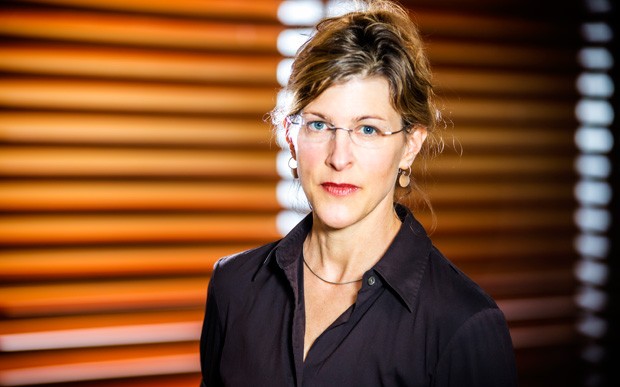‘Swim in the realm of the possible’
 Rebecca Duclos: “‘Next generation’ is a posture that is not declarative, but interrogative.”
Rebecca Duclos: “‘Next generation’ is a posture that is not declarative, but interrogative.”
Many stimulating recommendations emerged from the consultations Rebecca Duclos, dean of Fine Arts, held with faculty and staff. Over eight months, she coordinated several “idea labs” and group discussions.
The results were formulated into a Faculty of Fine Arts “Strategic Speculations” plan, and many projects have already taken flight. We spoke to the dean about the faculty’s upcoming initiatives and her overall vision for the year.
What’s a next-generation faculty?
We chose to refer to our faculty plan as “Strategic Speculations” precisely because we wanted to suggest a next-generation imperative grounded in our deep history but also pivoting towards aspects of a future faculty we may not yet recognize!
While we’ve articulated some ideas that are aspirational, our approach, itself, is modelled after one of our disciplinary fields called “speculative design.” Rather than restating known configurations, speculative design swims in the realm of the possible and the potential and puts forward propositions rather than declarations in order to stimulate thinking about the unknown.
The arts have always done this extraordinarily well. An example of this is our Institute for Urban Futures, which purposefully has an agile footprint both physically and conceptually. It exists without walls and perches in Concordia’s off-site space in Mile End while being shaped by its university and community members who collectively design its mandate through their evolving participation.
We even have our first “futurists in residence,” who are leading us in new directions we could not have predicted. Form follows function: echoing the dynamism of urban neighbourhoods, the institute will accommodate new desires and directions of various assemblages as they appear and disappear over time. I’d say “next generation” is a posture that is not declarative, but interrogative.
How will the activities in your strategic plan help your faculty get there?
Well, if “there” is the future, it seems like every minute of questioning counts! But maybe it’s better to take a breath and recall Willem de Kooning’s words, “I have to change to remain the same.” We are a faculty where scholarly, visual, performing, cinematic, design and digital arts thrive and we won’t change that.
What we will continue to do is invite others to see the significance of our material and methodological practices from various vantage points. The significance of the STEM to STEAM movement is interesting in this regard. More and more, the necessity of the arts within the rather anemic model of exclusively “science, technology, engineering and math” curricula is being recognized across the globe.
Our interest in the cross-fertilization of conceptual and applied ideas is what spurred us on to launch the FOYER Fellowship program for graduate students, to engage the Convergence, Perceptions of Neuroscience collaboration and to nurture a new embedded faculty initiative. Each is bringing researchers into the labs, centres, studios and fabrication facilities of others.
“Praxis portals” around Concordia that will create literal windows, and our favourite metaphorical term — “wormholes” — into the university’s inner workings will invite us all to visualize and materialize the way we perform research and “make knowledge” for a non-academic public.
We see a huge role in the future academy for experimental and experiential pedagogical practices that the Faculty of Fine Arts has long employed and can share with others. Ultimately, what we do best is what we have always done: respond improvisationally, sensually, intellectually and intuitively to some of the thorniest existential and social issues of our times, while deploying well-honed critical, material, iterative and narrative formats to do so.
Can you share three other key initiatives that are planned for 2016-17?
We have begun mapping out what we’re calling the “cultural consortium,” which will see Concordia acting as a kind of guest-host to the many organizations in Montreal with whom we have strong relationships.
Co-programming, co-publication and cross-funding opportunities are huge, but we need a consortium mentality to work more porously and strategically across our communities to build networks for our students and to share our resources with cultural partners.
Internally — and in a similar vein — we are also working to map out how our research, teaching and practice in the areas of health and wellness can be allied with work across the university.
And, finally, the “contiguous campus” plan imagines Concordia and the Montreal Museum of Fine Arts (MMFA) in a conjoined manner. In one year alone, faculty and students from the departments of Creative Arts Therapies, Art History and Art Education have initiated research, teaching projects and a new graduate certificate in art museum education and mediation with the MMFA.
The Department of Design and Computation Arts will also soon work with the museum and the City of Montreal to bring micro-festivals, facade projections and street events to the Bishop Street corridor that connects our campus to theirs.
Find out more about Concordia’s Strategic Directions.


